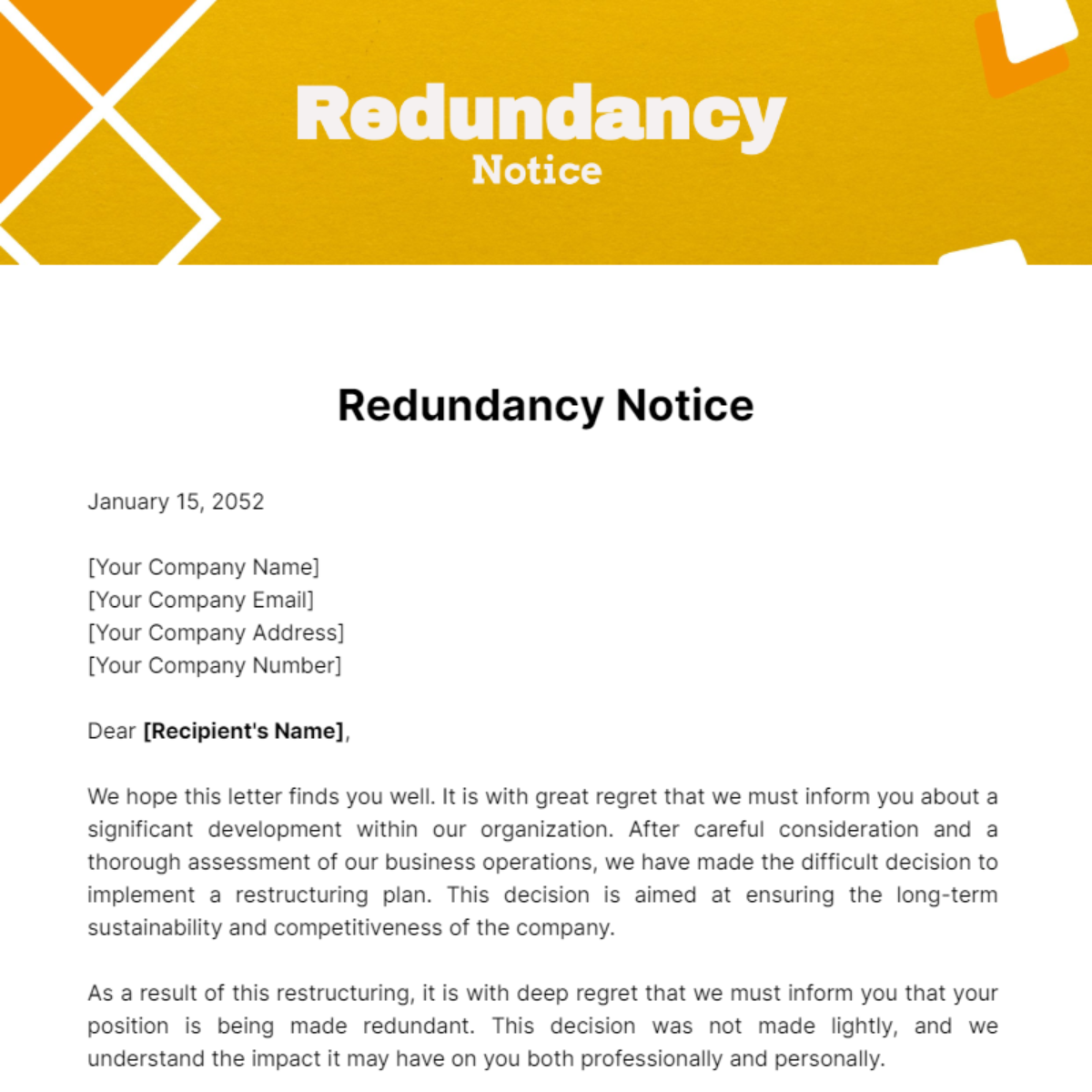Redundancy Pay If Company Goes Bust: Understanding Your Privileges in the UK
Redundancy Pay If Company Goes Bust: Understanding Your Privileges in the UK
Blog Article
Exploring the Interplay In Between Business Redundancy and Organizational Flexibility for Future Growth
In the vibrant landscape of today's service world, the detailed partnership in between business redundancy and organizational versatility emerges as an essential factor for continual growth and success. Companies often deal with the obstacle of striking a fragile equilibrium in between maintaining a degree of redundancy to minimize threats and cultivating flexibility to respond promptly to the ever-evolving market needs.
Value of Company Redundancy
Business redundancy is a critical aspect that improves organizational durability and alleviates operational dangers. By integrating redundancy steps within the organizational framework, companies can much better withstand unforeseen disruptions and fluctuations in business environment. Redundancy offers as a critical barrier, enabling business to adapt and react properly to unforeseen difficulties without compromising essential procedures.
One trick facet of the importance of firm redundancy is its function in guaranteeing continuity throughout times of dilemma. When confronted with sudden adjustments or emergencies, redundant systems, sources, or workers can action in to keep important functions and prevent prevalent interruptions. This continuity not just safeguards the company's online reputation and client count on yet likewise minimizes economic losses and operational downtime.

Techniques for Organizational Versatility

One more critical strategy is purchasing modern technology and infrastructure that can support versatility and scalability. Carrying out electronic devices, automation, and information analytics can simplify procedures, boost performance, and give valuable insights for informed decision-making. Moreover, creating adaptable business frameworks that permit fast adjustments to market characteristics and consumer demands is crucial for remaining affordable in a swiftly progressing environment. By proactively identifying potential disruptions and possibilities, companies can proactively flourish and adapt in an ever-changing business landscape.
Balancing Redundancy and Adaptability
Attaining a harmonious equilibrium in between operational redundancy and business versatility is paramount in browsing the complexities of a vibrant company environment. Redundancy within a business offers a safeguard, ensuring connection and stability in procedures. However, an unwanted of redundancy can result in inadequacies and impede adaptability to altering market problems. On the other hand, business adaptability permits firms to react promptly to outside disturbances and seize brand-new opportunities. Striking the ideal equilibrium between redundancy and flexibility is a delicate procedure that calls for a deep understanding of the organization's objectives, sector dynamics, and danger resistance.
To attain this equilibrium, firms require to perform normal analyses of their procedures to identify areas where redundancy is necessary for risk mitigation and where flexibility can drive innovation and development. Applying adaptable frameworks, promoting a society of continuous knowing and improvement, and encouraging open interaction throughout all degrees of the organization are key strategies to integrate redundancy and flexibility properly. By lining up these two crucial elements, firms can place themselves for sustainable growth and success in an ever-changing organization landscape.
Study on Adaptation Success
In analyzing circumstances of effective organizational adjustment, it comes to be apparent that the interplay in between operational redundancy and adaptability is a specifying element in shaping durable companies. One engaging situation study is that of Netflix. Originally a DVD rental service, Netflix showed exceptional adaptability by transitioning right into a streaming platform when digitalization interfered with the market. By strategically spending in technology and web content creation, Netflix not just made it through but prospered in a swiftly developing market. An additional standout example is Amazon. Beginning as an online book shop, Amazon continuously adjusted its business design, increasing into varied sectors such as cloud computer and expert system. This adaptability allowed Amazon to remain in advance of competitors and satisfy transforming consumer demands. Last but not least, Adobe offers a notable illustration of successful adjustment. The company moved from offering software licenses to a subscription-based design, making certain repeating profits streams and boosted customer interaction. These study highlight the relevance of functional redundancy coupled with organizational versatility in cultivating long-term growth and competition.
Building Resilience for Future Growth
Building strength for future development needs a calculated positioning of operational processes with market dynamics and arising fads. Business need to adapt to changing you could check here environments by cultivating a society of adaptability, advancement, and constant improvement. Resilience involves not just recovering from setbacks yet likewise proactively preparing for future obstacles. One crucial element of structure durability is buying durable threat administration approaches to minimize potential interruptions. This includes situation preparation, diversifying supply chains, and creating contingency plans for numerous contingencies (who pays redundancy money).
Furthermore, fostering strong relationships with stakeholders, such as consumers, staff members, vendors, and the community, is essential for preserving and weathering uncertainties count on and support during rough times. Effective communication and openness play a vital duty in building resilience, as they help align expectations and help with collaboration in browsing uncertainties.
Moreover, organizations require to prioritize discovering and advancement campaigns to upskill employees and equip them with the necessary devices to adjust to changing conditions. By buying their labor force, firms can improve their flexibility and agility, ultimately enhancing their durability for lasting future growth.
Verdict

In the dynamic landscape of today's business world, the intricate partnership between company redundancy and organizational versatility emerges as get more an essential element for continual growth and success. Companies frequently face the challenge of striking a fragile equilibrium between maintaining a degree of redundancy to minimize threats and cultivating adaptability to react promptly to the ever-evolving market needs.To attain this balance, firms require to perform normal analyses of their operations to identify areas where redundancy is necessary for danger mitigation and where flexibility can here drive advancement and development.In conclusion, the interaction between business redundancy and organizational flexibility is essential for future growth. Building strength through a combination of redundancy and versatility will certainly guarantee that companies are prepared for the challenges of the future.
Report this page